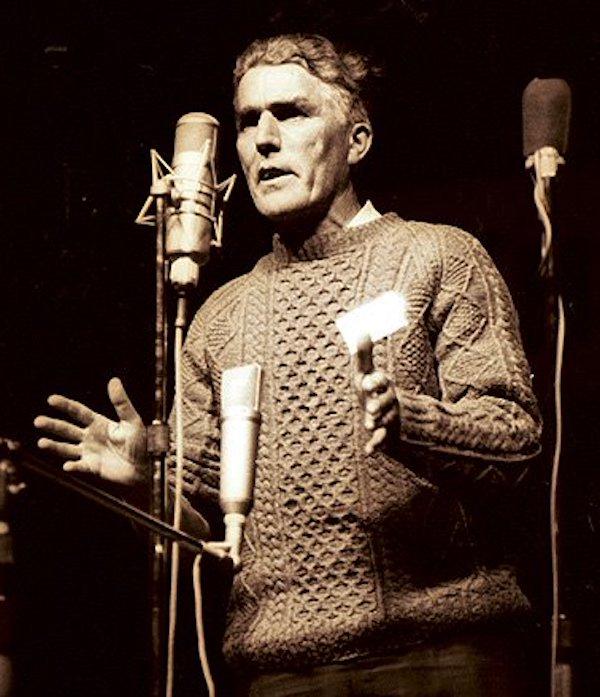Joe Heaney

Photo courtesy of the Ralph Rinzler Folklife Archives & Collections
Bio
Joe Heaney was born in 1919 in the parish of Carna, a remote village in Connemara, County Galway, along the west coast of Ireland. He grew up with his brothers and sisters along the seashore, often collecting shellfish for his family's dinner. Every evening, families in the area gathered for storytelling and singing. At that time, no one was able to afford musical instruments; all the singing was a cappella. As a small boy, Heaney recalled, he sneaked out from his bedroom to where the adults were sharing their stories and songs in the traditional Irish language. Usually, his eavesdropping went unnoticed, unless, he said, "I had the misfortune to start humming something I heard." He started singing himself at the age of five, but his shyness kept him from singing in public until he was 20.
Heaney went to school in Carna to learn English. When he was 16 years old, he won a scholarship to attend school in Dublin. Several years later, some friends persuaded him to enter a national singing competition in Dublin. He won first and second prizes. This was the beginning of his lifelong career singing Irish songs. Most of his repertoire (estimated to exceed 500 songs) was learned while growing up in Carna. He credited his cousin, his father, and his grandmother as the strongest influences on his developing a distinctive singing style.
In 1949, Heaney became involved in London's flourishing folk music scene. He worked as a "jack-of-all-trades, master of none" in London to support himself. His work ranged from shoveling concrete on building sites to teaching Irish music to adults. He was married for six years until his wife died of tuberculosis. While in London, he recorded for the Topic and Gael-linn labels and performed in several London pubs. He quickly established himself as one of the great Irish folk singers of all time.
Heaney came to America in 1965 at the invitation of the Newport Folk Festival. After singing at Newport, he decided to move to America and settled in New York City. To support himself, he took a job as a doorman at an upscale building in Manhattan. In time, one of the residents, Merv Griffin, discovered that Heaney was a singer and asked him to perform the traditional songs of his childhood on his show on Saint Patrick's Day. This television appearance introduced Heaney to a large American audience and established him as an important figure in the Irish community in New York. Over the next 15 years, Heaney performed across North America at festivals, and performed and taught for several years at Wesleyan University.
Heaney was a master of sean-nós or "old-style" singing. Sean-nós singing was developed during the seventeenth and eighteenth centuries in Ireland when the British confiscated all Irish musical instruments in an attempt to destroy Irish cultural unity. Throughout the countryside, the Irish kept their culture alive through a cappella singing and storytelling. The poetic meter of each song's lyrics determines the rhythm of sean-nós singing. Intricate melodic embellishments and ornamentation characterize the songs. Because of the rhythmic and melodic variability, instruments or other singers never accompany sean-nós songs. All of these characteristics draw attention to the story being told through the song. Although sean-nós songs are traditionally sung in Gaelic, the Irish language, many of Heaney's performances were in English.
In 1982, Heaney moved to Seattle, where he was a visiting artist at the University of Washington. While affiliated with the university, he taught traditional music and Irish language and folklore. Over the years, Heaney visited Ireland several times, but never returned to his native country to live. He felt his singing and traditions were more appreciated in the United States than they were in Ireland.

